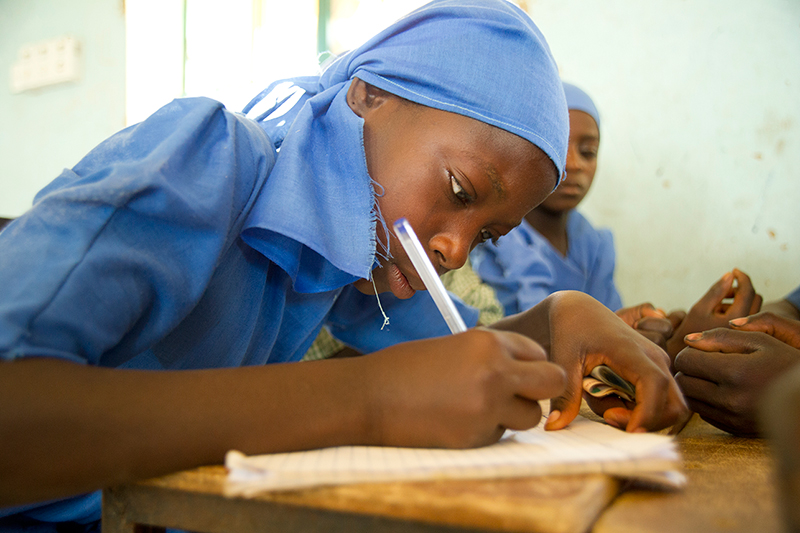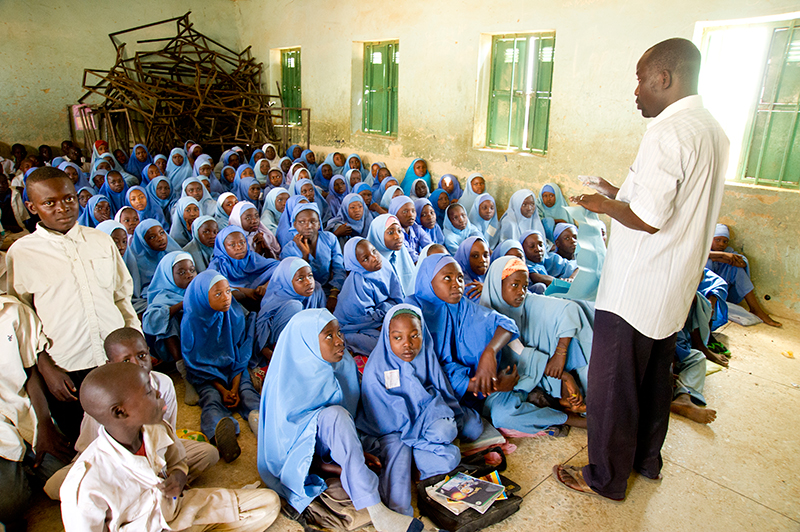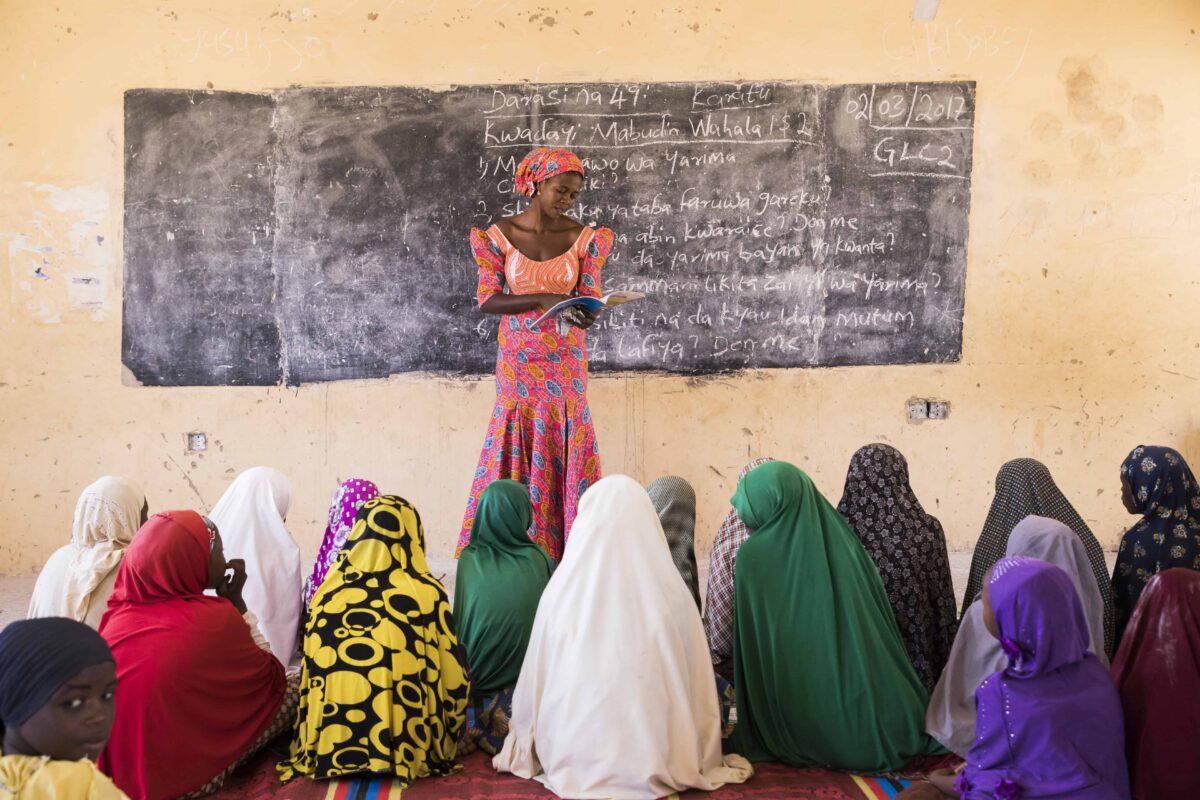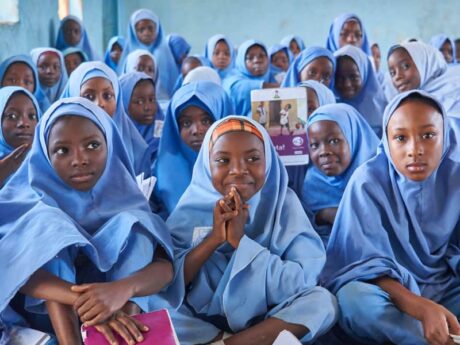Afternoon classes have just ended and the children were playing in the courtyard in front of Sabon Kaura school, though the heat in Bauchi, Nigeria, didn’t slow down the approximately 30 students. They were happy to be in school at all.
Until recently, the 10 to 13 years old students in the Sabon Kaura school lived in other communities in Northern Nigeria. However, those schools no longer exist. Indeed, some of their villages have been abandoned.
An insurgency has wreaked havoc on parts of Nigeria, displacing more than 2 million people—one of the largest concentrations of internally displaced persons in Africa. More than 1 million school-aged children and youth have been set adrift inside the country, ripped from their communities and their schools.
With the magnitude of the situation, the U.S. Agency for International Development, along with state officials and nongovernmental organizations, stepped in with the Education Crisis Response program.
Launched in 2014, the goal of the program is to expand access to quality and protective non-formal education (NFE) and alternative education opportunities for out- of-school children, ages 6-17 in three Nigerian states and reduce the burden on local schools already stretched thin by limited resources.
It is implemented by Creative Associates International (CreativeAssociatesInternational.com) and the International Rescue Committee (rescue.org), along with in-country NGOs and officials from the state and local governments.
Calling on the community
The pastor who oversees the Sabon Kaura school in Bauchi says his community welcomed the displaced children, many of whom arrived to his church.
“Because we had almost 500 [internally displaced persons], the church could not contain them, so a lot of people volunteered to take them home,” says Joshua Inaliya, Pastor of the Church of
the Brethren in Bauchi.
The key to the program is engaging those communities where the displaced populations live, says Helen John, Community Mobilization and NGO Coordinator for the program.
“We are relying on existing structures, and the community is one such structure because they are already on the ground,” John said.
With an estimated 90 percent of those displaced living with friends and relatives, local communities are best positioned to identify children most in need. The Education Crisis Response program coordinates with state government to determine where the largest IDP populations are located and then approaches leaders in those communities to get buy-in for the intervention.
“Our first point of call was the community heads,” John explains. “We went to…tell them the purpose of the project and what we intend to do in their communities. There is no way we can succeed if the community does not support our work.”
Creating local learning centers

Once the scope of the program has been explained, host community leaders can help program staff identify residents to act as Learning Facilitators for the children and select local sites to be used as non-formal learning centers.
The leader of the Gwallaga Village in Bauchi, Dandada Ahmadu, immediately embraced the project.
“Seeing the children and knowing that they stopped going to school, we began to consider what to do to get them back to school,” says Ahmadu. “So we started working together with USAID and [Bauchi’s] social welfare to support the children.”
In Gwallaga, the village chief arranged for two classrooms at a public school to be used as a “non-formal” learning center, which allowed the displaced children attend classes in the afternoon.
These classrooms use a curriculum of math and reading approved by Bauchi’s State Universal Basic Education Board, with the ultimate goal of reintegrating the children back into a formal learning environment.
“Despite the fact that they are not in their communities, they’re…still continuing with their education,” John said. “We intend that after nine months they mainstream into the formal schools.”
Building community coalitions
To ensure ongoing support, the Education Crisis Response program works closely with local community groups once the learning centers have been established.
Known as Community Coalitions, these groups work together to manage the activities at the learning centers, check attendance, pool resources to provide basic meals and supplies and support the facilitators.
Because they live locally, John points out, these coalitions are well positioned to provide support where it is needed most.
“The Community Coalition as a structure is instrumental in making things happen in our centers,” John said, and “are closer to the people, so they’ve been able to see what we cannot see at the grassroots.”
Looking forward

To ensure sustainability after the Nigeria Education Crises Response program ends, state officials have increased their support to the pilot learning centers, providing blackboards, books and other supplies, while also monitoring the lessons carried out as part of the non-formal curriculum.
That support, John underlined, will be critical to the long-term success of the program.
“I’m very sure with time the government should be able to take these centers so that they continue,” John says. “We…have internal displacements that are coming to our communities, so we should be able to respond to them because they are also children of Nigeria.”
As the insurgency continues across parts of Northern Nigeria, challenges remain. More children are displaced each day and many of those in the learning centers are still vulnerable as their families are repeatedly uprooted.
The Education Crises Response program provides stability by engaging the support of local communities and, with it, peace of mind that has been missing for many amidst the uncertainty of life in a conflict zone.
For Helen John, it is this peace of mind that makes her work with the program personal.
“In talking with the kids, because of what has happened, they are feeling as if all hope is lost,” John says. “But with this project they’ve been able to at least come to the realization that it is not the end for me. I can still make it in life.”
Produced for USAID by Creative Associates International. Written by David Snyder, with reporting by Michael J. Zamba and Ernest Akoma in Nigeria.



